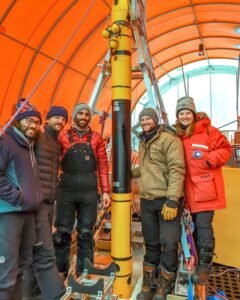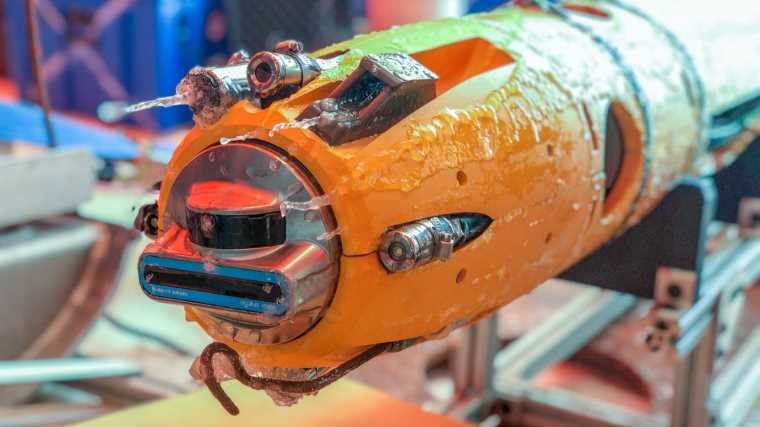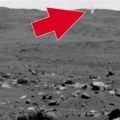Cornell University Scientists exploring underneath the Antarctic Ice Shelf as part of a NASA program to potentially explore the oceans of Jupiter’s Moon Europa say they have made an unexpected discovery that may have significant implications on the stability of all ice shelves.
Spotted by an underwater robot that was funded by NASA’s Ross Ice Shelf and Europa Underwater Probe (RISE UP) project, the crevices, jet flows, and other unknown patterns were so unusual that the shocked researchers say they weren’t even part of models commonly used by scientists to determine the overall stability of these critical geological features.
“Crevasses move water along the coastline of an ice shelf to an extent previously unknown, and in a way, models did not predict,” explained Peter Washam, a polar oceanographer and research scientist at Cornell University.
Robot Finds Sideways Jets and Other Diverse Formations Hiding Beneath Antarctic Ice Shelf
To make the unusual discovery, the researchers used an underwater robot called an Icefin. This particular robotic explorer was 12 feet long but less than 10 inches in diameter, making it the perfect tool to slip down the narrow passageway in the Antarctic ice drilled using hot water and peek into a part of the world never seen by humans. Once underneath the Ross Ice Shelf, the RISE UP robot found a series of crevices that they say had been totally unexpected.
On the third dive, the team decided to explore one of the crevices and found a series of totally unexpected patterns and features. According to the press release announcing the find, this included “scalloped indentations giving way to vertical runnels, then green-tinted marine ice and stalactites” as the crevice narrowed.


They also found that melting that occurred at the crevice’s base, combined with a phenomenon known as “salt rejection,” which prevented freezing at the top of the crevice, moved water up and down around the horizontal jet, “driving uneven melting and freezing on the two sides, with more melting along the lower downstream wall.” These new and unexpected features and patterns shocked researchers, who noted that each one is a significant factor in ice shelf stability never considered by researchers before.
“Each feature reveals a different type of circulation or relationship of the ocean temperature to freezing,” Washam said. “Seeing so many different features within a crevasse, so many changes in the circulation, was surprising.”
Discovery Critical to Understanding Rising Sea Levels
Published in the journal Science Advances, the new findings are not only critical to environmental scientists trying to understand ice shelf stability but also another example of modern tools like robots and sensors allowing researchers to look into places that were impossible to explore even a few years ago. The research team also notes that their work will have critical importance in efforts to understand the effects melting glaciers and ice shelves will have on the world’s oceans.
“If water heats up or cools off, it can move around in the back of the ice shelf quite vigorously, and crevasses are one of the means by which that happens,” Washam said. “When it comes to projecting sea-level rise, that’s important to have in the models.”
“The ocean takes advantage of these features,” the Cornell researcher added, “and you can ventilate the ice shelf cavity through them.”
Christopher Plain is a Science Fiction and Fantasy novelist and Head Science Writer at The Debrief. Follow and connect with him on X, learn about his books at plainfiction.com, or email him directly at christopher@thedebrief.org.

